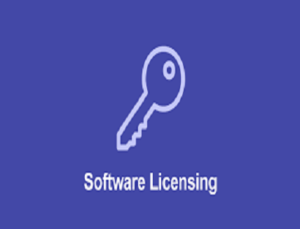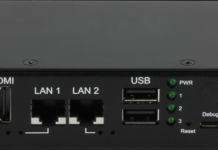
More and more software companies continue to realize that there are many individuals and corporations using their products without any licenses. This has led many companies to come up with auditing procedures to find out if their clients are under licensed (where the company doesn’t have enough licenses for the amount of software they use). The penalties can be severe, with some being forced to pay tens of thousands of dollars in fines.
This has raised concern among a few corporations because most of them might actually be under licensed but unintentionally. This is where a company’s management thinks they have all the required licenses, but a change in metrics by the license providers or a change within the structure of the business pushes them to a higher licensing bracket.
The Challenges of Software Licensing
Being an intellectual property, the most common way for people to get authority over using a certain software is through licensing agreements with third-party vendors. With the licensing agreement comes rights and duties. Rights include the authority to use the software under certain licensing restrictions, while duties include license and maintenance costs.
These rights and duties are always listed in detail in the licensing documentation of each software product, and they vary depending on the edition, vendor and version, sometimes also by geography. Under this licensing documentation is where most companies find challenges, as discussed below.
1. Identifying The Correct Licensing Documentation
Many licensing challenges stem from the inability of the company acquiring the license to find which licensing document they should follow. Big-name vendors such as Microsoft, IBM, and Oracle publish thousands of licensing documents online every year. For example, in the year 2012 between January and October, IBM published over 12,000 licensing documents, of which 8,800 were Program Announcement Letters (PLETs), and 3,500 were Licensing Information (LIs).
With such information, most non-experts will find it almost impossible to remain actively informed and to find and collect the relevant documentation. This leads to some of them using the wrong documentation for the licensing. Such scenarios are what we referred to earlier as a company being under licensed. They will end up paying for the wrong licenses, which could either increase the revenue of the software company or reduce the revenue generated.
Ultimately, customers must remain in the position of having all licensing documents applicable to their infrastructure, at their disposal. This is why hiring a software management partner is necessary because they can be able to keep up with all the changes in licensing and ensure that your company is complying regardless of what happens.
2. License Metrics & Licensing Restrictions
A licensing metric is a formula that is used to calculate the customer’s usage of the software. The perfect licensing metric should be fair, simple, scalable, and measurable. Unfortunately, the metrics issued by most software companies are the complete opposite. They are often complex, volatile, unfair, and hard to calculate.
For instance, the Authorized User (one person) metric is relatively simple and easy to understand. However, IBM applied time restrictions to create the Concurrent User metric. Also, combined with the metric per install, they created the Floating User metric. If that wasn’t enough, they applied another restriction – on sessions opened – to create the FUSSI (Floating User Single Session Single Install) metric. All these changes made the metrics very complex for the normal consumer to understand and keep up with.
An example of the volatility of the metrics given by software companies is the 2012 change of the so-called IPAA rule 3.5. by IBM. This resulted in a dramatic increase in the reinstatement amount paid in audit settlements for unprepared corporations.
A good example to show the unfairness of metrics is the provision by Oracle that does not allow a reduction in the number of processor licenses in the case of virtualization, excluding very few cases. This means that if a company using Oracle software was virtualizing and allocating exactly the same number of cores to the virtual machines as were available on the physical platform, which doesn’t increase its technical usage, the license demand is increased because Oracle does not allow for the reduction of cores by means of logical partitioning.
For restrictions, software vendors can become very inventive, and when a consumer doesn’t comply with the restrictions, they could be putting themselves at risk of dramatic consequences such as audit penalties.
How To Conquer The Challenges In Software Licensing
Now that we know some of the licensing challengesmost companies are likely to face, it’s time to look at potential solutions to these problems.
● Start Tracking Your Compliance from The Very Beginning
Even if you have the latest and most effective method to track your software licenses, the secret is to start it at the beginning of your PC life cycle. This means recording information about the software installed on every PC within the company and making sure that it has the necessary licenses. It’s a hundred times easier to track something from the start than it is to try to pick up the pieces later because you will only have to do it bit by bit, eliminating any chances of an oversight.
● Automate the Process with Software
You can take advantage of the various programs available to track software licensing. Most of these programs are inexpensive, with others even being free, so you don’t have to worry about a significant addition in expenses. These programs make it easy to know which software requires which licenses and will even alert you when there’s something that needs attention, for example, a lack of compliance brought by the addition of a computer to the network.
● Consider Open Source Alternatives
Instead of having to worry about your license compliance, why don’t you go for software that doesn’t need licensing? As much as it may not suit every operation within the organization, it could make the work of tracking the licensed ones easier.
In Summary
Software licensing comes with a lot of challenges, but it is the duty of IT managers to find a way to cope because, sadly, there is no way around them unless you develop your own software.


















